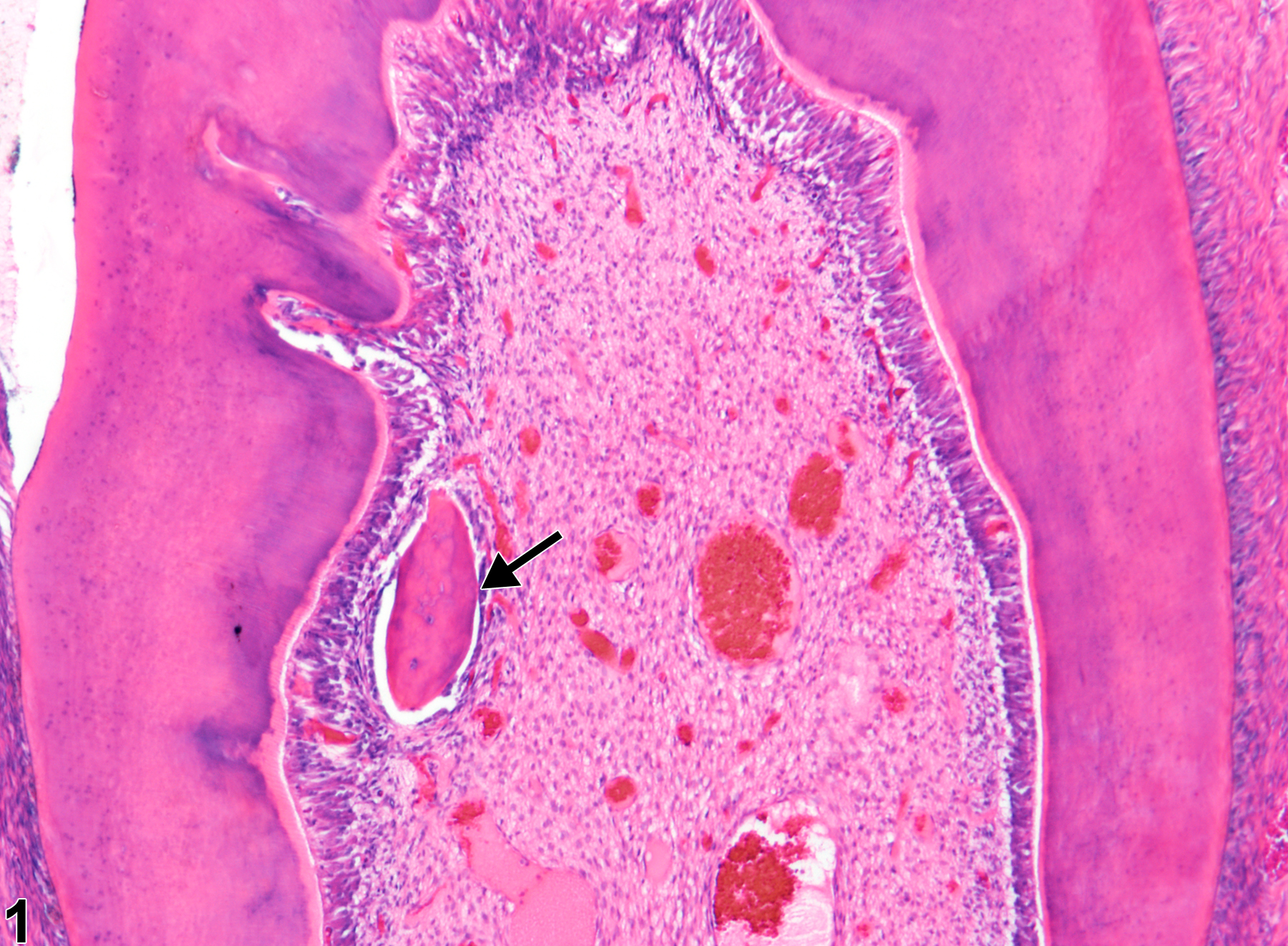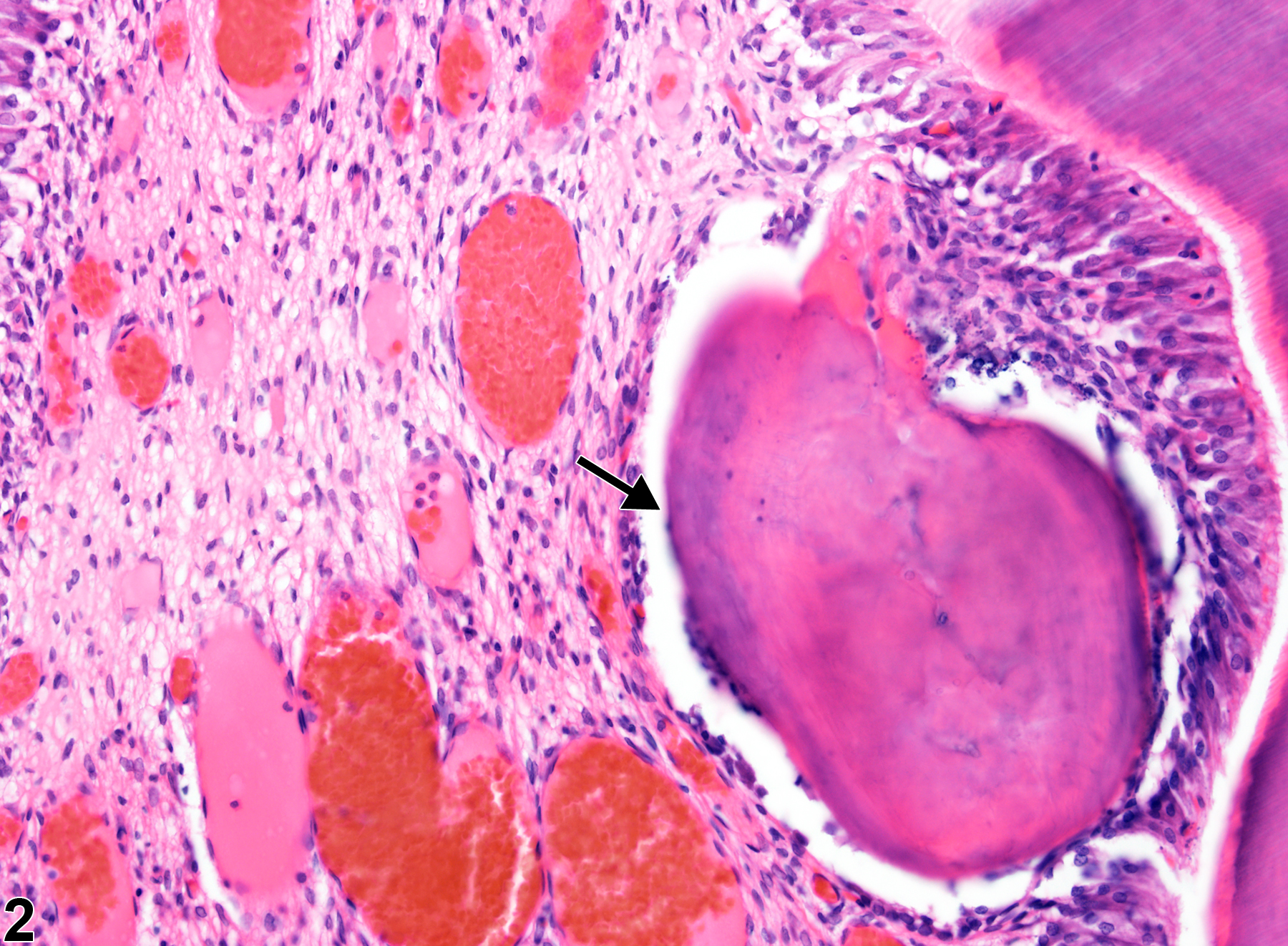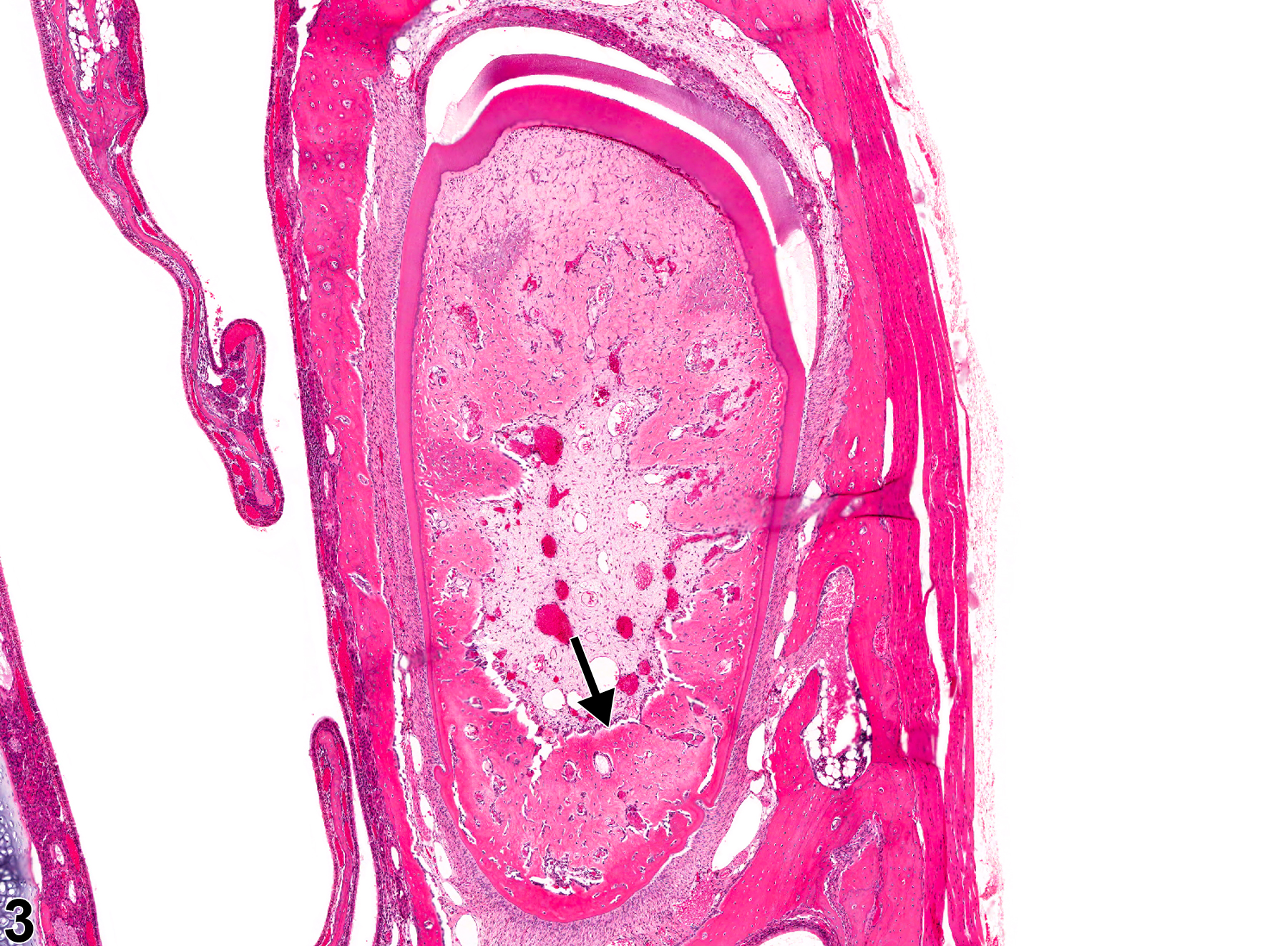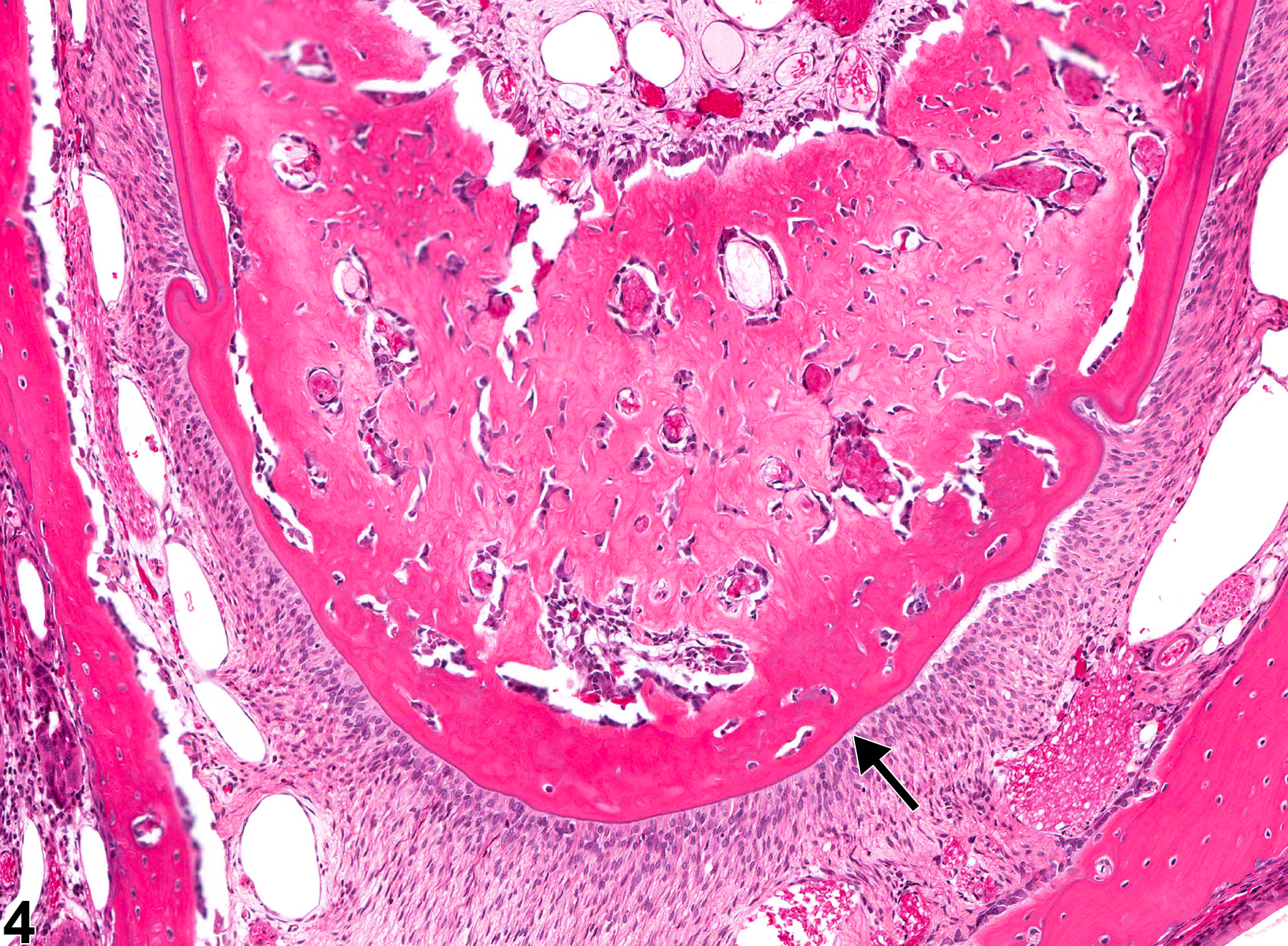Alimentary System
Tooth, Pulp - Osteodentin
Narrative
The rate of osteodentin deposition depends on the intensity and duration of the stimulus; the more severe the stimulus/injury, the more rapid the rate of osteodentin deposition. The type of stimulus has an effect on the architecture and structure of the osteodentin. If the stimulus is a carious lesion, there is extensive destruction of dentin and damage to the pulp, due to the differentiation of bacterial metabolites and toxins. Thus, osteodentin is deposited rapidly, with a sparse and irregular tubular pattern and some cellular inclusions. After rapid deposition, odontoblasts become trapped in the newly formed matrix, and the tubular pattern becomes obscured or distorted. Formation may be solitary (Figure 1 and Figure 2, arrows), multiple, or diffuse (Figure 3 and Figure 4, arrows). Some test articles can directly or indirectly cause undifferentiated pulp mesenchymal cells within the cell-rich zone to terminally differentiate into odontoblast-like cells and deposit osteodentin within the pulp. Osteodentin deposits may resemble bone, osteoid, predentin, or dentin in the pulp cavity.
Brown HR, Hardisty JF. 1990. Oral cavity, esophagus and stomach. In: Pathology of the Fischer Rat (Boorman GA, Montgomery CA, MacKenzie WF, eds). Academic Press, San Diego, CA, 9-30.
Abstract: https://www.ncbi.nlm.nih.gov/nlmcatalog/9002563National Toxicology Program. 1996. NTP TR-393. Toxicology and Carcinogenesis Studies of Sodium Fluoride (CAS No. 7681-49-4) in F344/N Rats and B6C3F1 Mice (Drinking Water Studies). NTP, Research Triangle Park, NC.
Abstract: https://ntp.niehs.nih.gov/go/12237Ten Cate AR. 1998. Dentin-pulp complex. In: Oral Histology: Development, Structure, and Function, 5th ed. Mosby-Year Book, St Louis, MO, 150-196.

Tooth, Pulp - Osteodentin in a male F344/N rat from a chronic study. There is a small deposit of osteodentin (arrow) in the pulp cavity.





